Bulletstorm and The Vanishing of Ethan Carter lead Adrian Chmielarz once confessed that he liked the idea of survival games more than any survival games he actually played. I feel similarly, but his remark got me thinking about why that might be.
I’m always in the mood for a great survival game, so why do so many leave me feeling cold? Is there any game that’s done survival well?
I don’t think the issue is innate to the genre. Conceptually, the idea of surviving against the odds is a great one. The emotional core of a survival experience — the tension of vulnerability and the thrills that accompany overcoming the odds — makes the genre uniquely compelling. The lack of appeal must come from the implementation of survival mechanics rather than the genre itself.
How does a typical survival game work?
You are, generally, on your own, generally in a place far from civilisation and resources. Finding food and water is important because your hunger meter is constantly draining — some games require players to sleep as well. You’ll often have to scavenge for resources and craft the tools necessary for survival. Animals or monsters prowl the game world, particularly at night, so these games usually feature combat mechanics. These games generally offer long stretches of uneventful gameplay punctuated by brief moments of frustration.
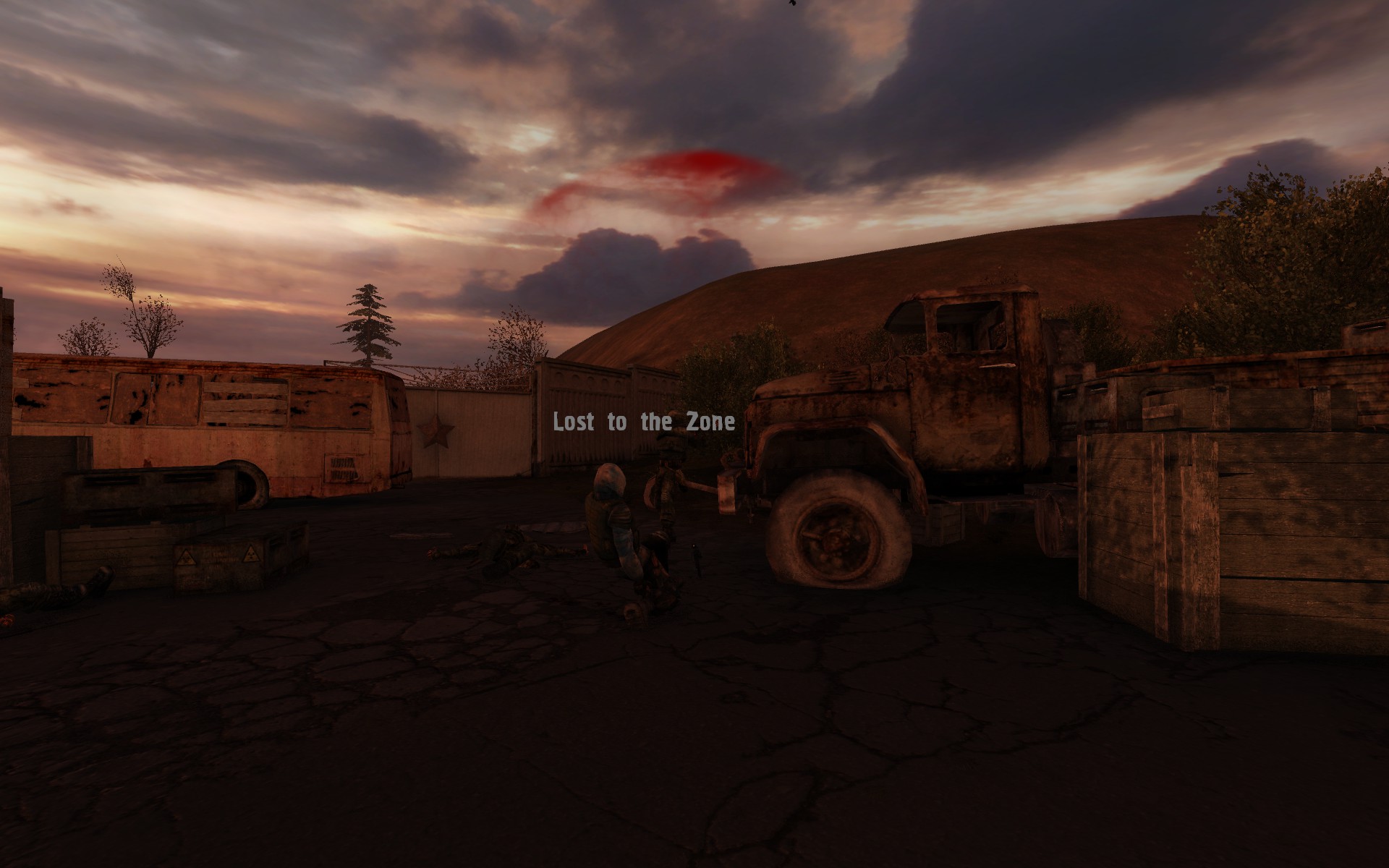
It feels like survival games are often built on a broken premise: the bulk of the player’s time is spent gathering food, water or other resources without much opportunity to break up the experience. Rather than engaging in interesting actions, players largely find themselves reacting to whatever gauge they need to refill the most.
Fortunately, some developers use combat to break up the experience. Unfortunately, much of this combat is disappointing; enemies are often damage sponges, weapons break with alarming frequency, and player stamina is rarely good for more than a few swings. Combat feels awkward and strange. One game I played placed an emphasis on melee weapons and gun inaccuracy, which meant that, despite having a character proficient in the use of guns, my rocket launcher would still fire rounds directly towards my feet — even if I aimed at a zombie standing in front of me.
So, to break down the problem with most survival games:
- Fast, always-draining resources are a source of continual stress, rather than tension.
- The speed with which these resources diminish places an undue focus on a play style that lacks variation as players must spend most of their time scavenging.
- Combat is often used to add variety, but survival game combat tends to be frustrating, which discourages players from engaging with it.
How could a survival game solve these problems?
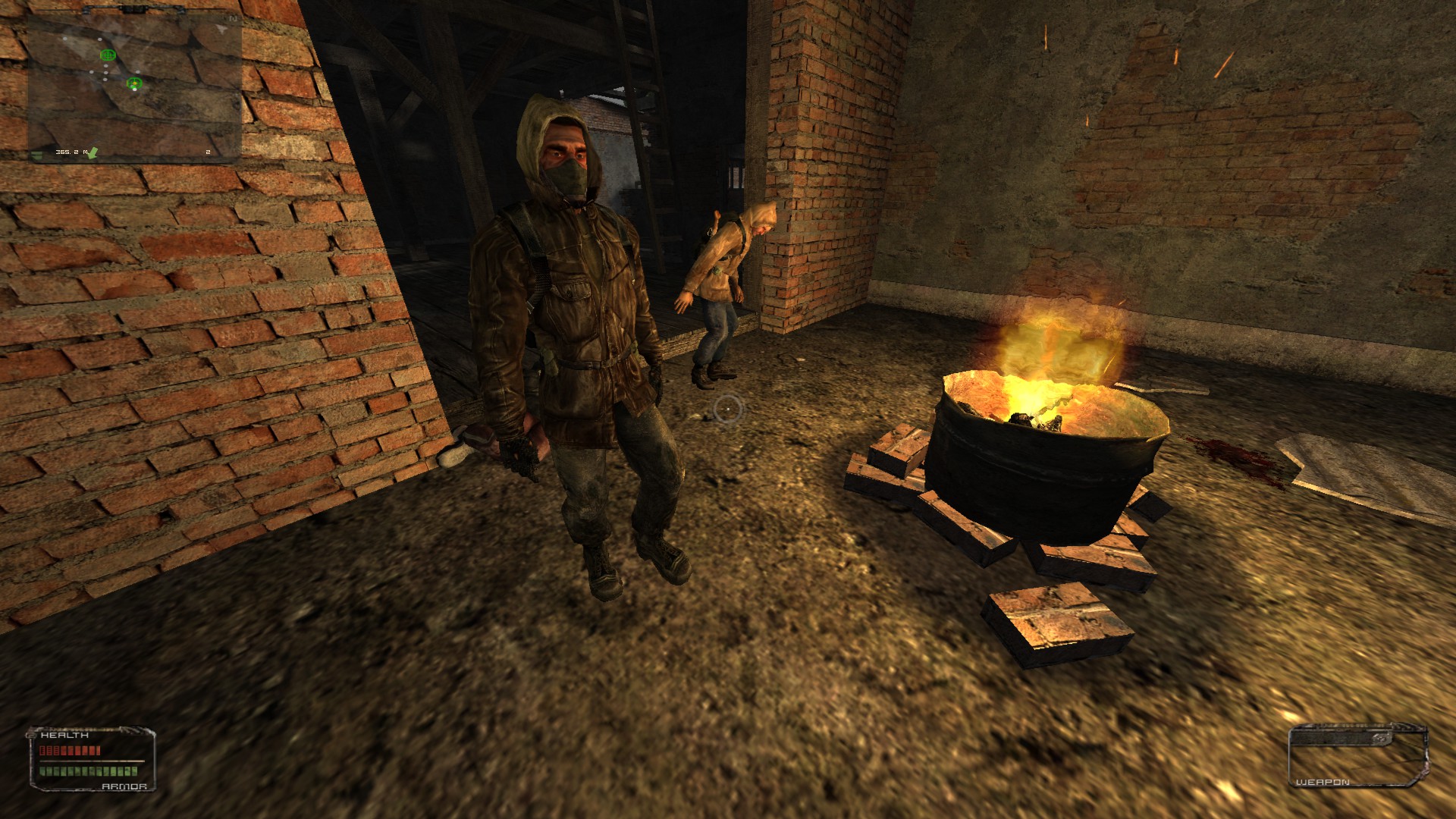
In my mind, the perfect survival game would be a varied experience that focuses on survival in ways other than forcing the player to constantly prowl the game world for resources. If this perfect survival game were to feature combat, tension would stem from the encounter design rather than awkward movement or aiming. Does this game exist?
Yes, though it’s not just one game, but an entire series.
S.T.A.L.K.E.R.: Shadow of Chernobyl is the first of three S.T.A.L.K.E.R. games released by Ukrainian developer GSC Game World. The series is loosely based on an old Russian sci-fi novella Roadside Picnic. On its 2007 release, Shadow of Chernobyl was a buggy, janky experience. After months of patching, however, the game began to shine. Since then, the series has seen a rich mod community work to make the experience shine even more.
The root, I think, of the S.T.A.L.K.E.R. series’ success is that it’s less about managing resources and more about managing time. Yes, you need food, but the hunger countdown in SoC is far more generous than most survival games.
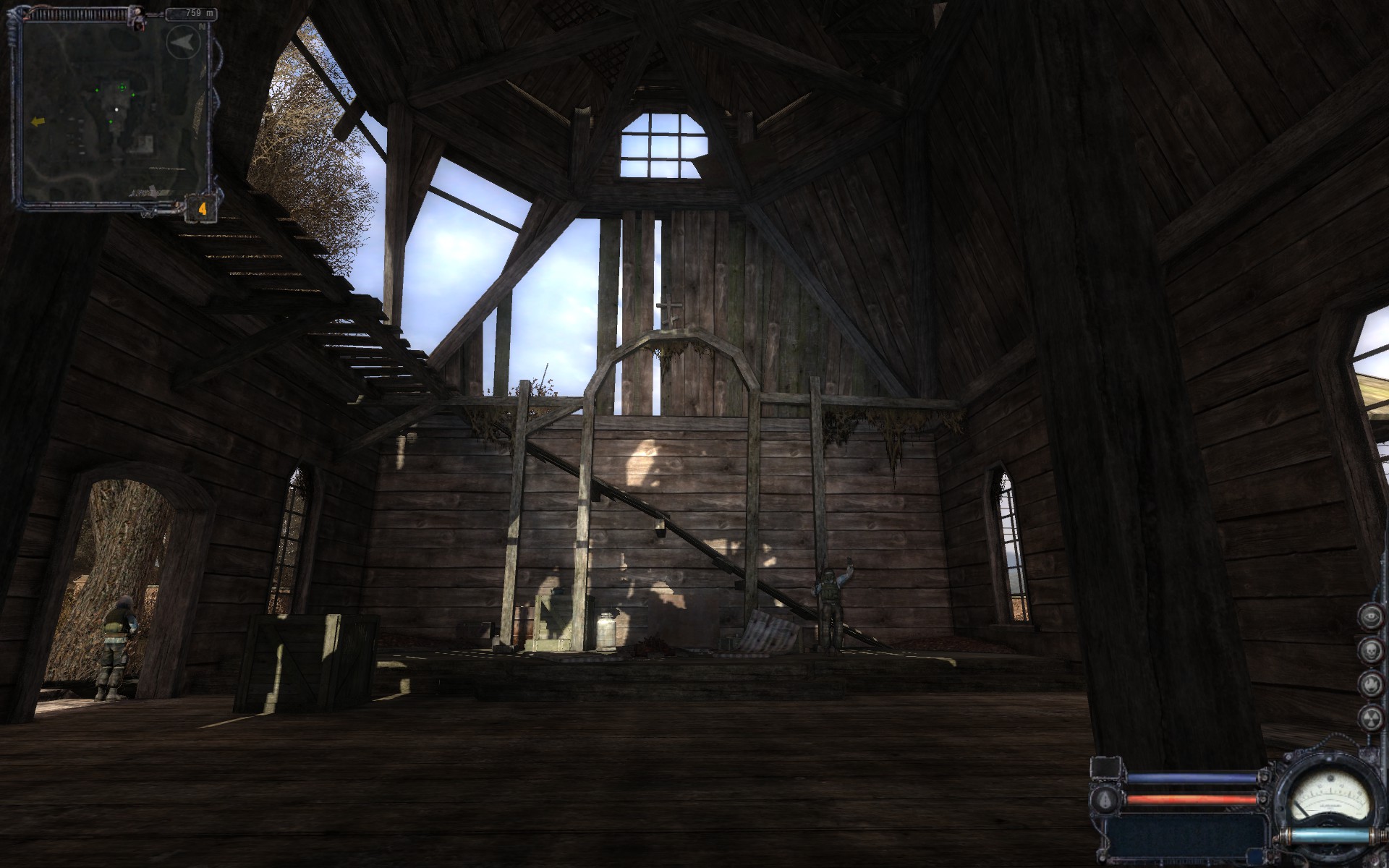
S.T.A.L.K.E.R. is no cakewalk. The Zone — the area where the game takes place — is rich with obstacles that prevent players from reaching their goal. First, and most obvious, there are the other humans, most of whom are heavily armed and eager to demonstrate their firepower. The game’s faction system adds a wrinkle in the game — join one group, and others will be out for your head. Save a life and you may win a friend; kill a person, and you’ll find others turning against you.
The game’s AI system, called A-Life, is easily one of the most complex AI systems in a game, and it goes a long way towards making the S.T.A.L.K.E.R. games’ worlds feel richer and more alive than any other series out there. Many times, I’ve stumbled across remains of battles that happened long before I arrived, and, needing resources, I’ve stopped to gather what I’ve needed.
It doesn’t stop with the humans, however. The Zone is the site of a localised apocalypse, a scar in an otherwise normal reality. Mutants and monsters roam the Zone. I’ve encountered dogs that can create psychic copies of themselves, quickly overwhelming any prey. I’ve barely escaped the dens of invisible bloodsuckers and dodged the stomps of a rampaging pseudogiant. Psychic controllers — former humans — still cause me to bolt in a panic whenever I encounter them.
Then there are the anomalies.
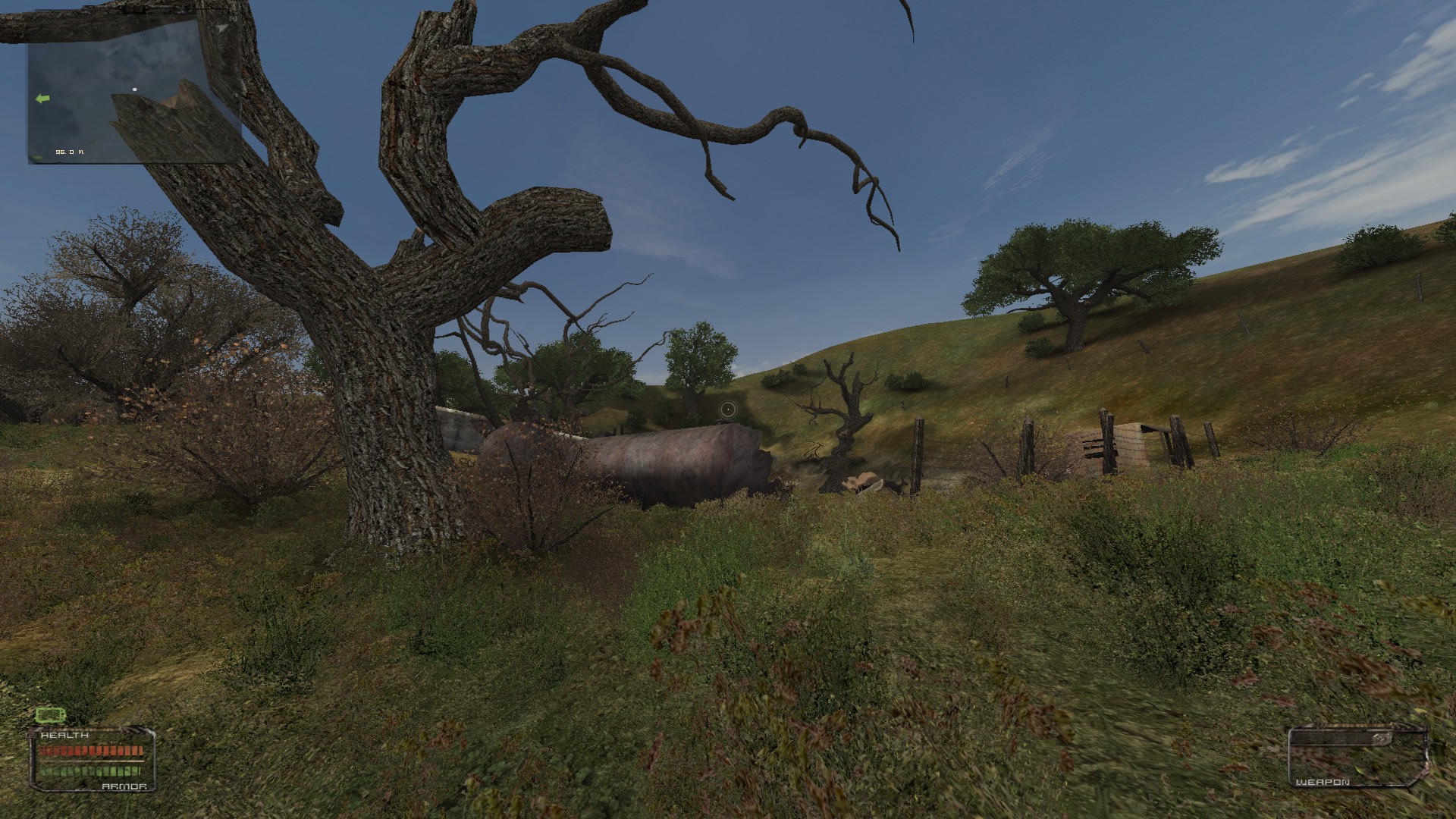
Anomalies are, for lack of a better word, glitches in spacetime. Some appear as a simple pulse in the air, but get too close and they will suck you in. It’s unlikely you’ll escape. Other anomalies include pockets of crackling electricity, columns of shimmering light that do psychic damage, and ghostly jets of flame. If that’s not enough, the Zone is full of pockets of radiation, especially near metallic objects. See that sweet loot stash over there? It’s next to your truck, and your geiger counter’s beeping — are you sure you want to do that?
If you survive the people, you’ll face the mutants, and if you can defeat the mutants, you’ll have to deal with the anomalies. Oh, and then there are blowouts, massive radiation storms that demand you hide underground or suffer a torturous death due to radiation poisoning.
But that’s not all.
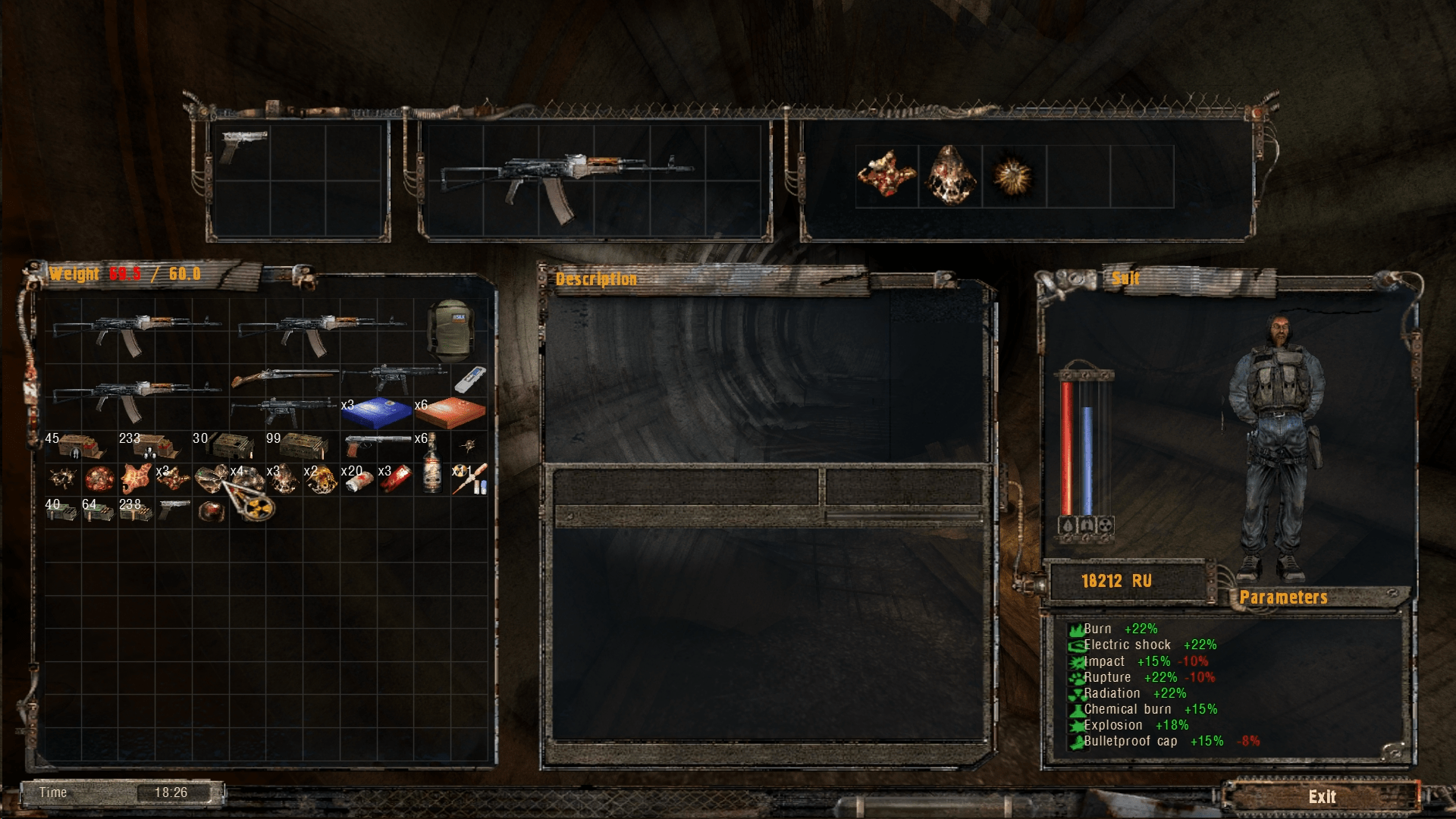
Many survival games are about the essentials — food, water, shelter, medical supplies, and occasionally, weapons. S.T.A.L.K.E.R. increases the number of resources you need, generating tension through a complexity of needs.
You must manage radiation through vodka or anti-rad medication. Not only do you need to eat, but, with the right mods, you may need sleep as well. Protection from psychic activity is a tremendous boon. Having quality armour is always a must. Repairing weapons is important if you don’t want to have a gun jam during a firefight. Maintaining your stamina through energy drinks is always a good idea.
If you start bleeding, you’ll want to use bandages to stop the flow of blood or you’re likely to die — this mechanic alone has led to some of the most hectic firefights I’ve ever encountered. Artefacts can help you survive by letting you carry more gear or making your blood clot more quickly. But most artefacts also add radiation, so now you’re back to the vodka or meds.
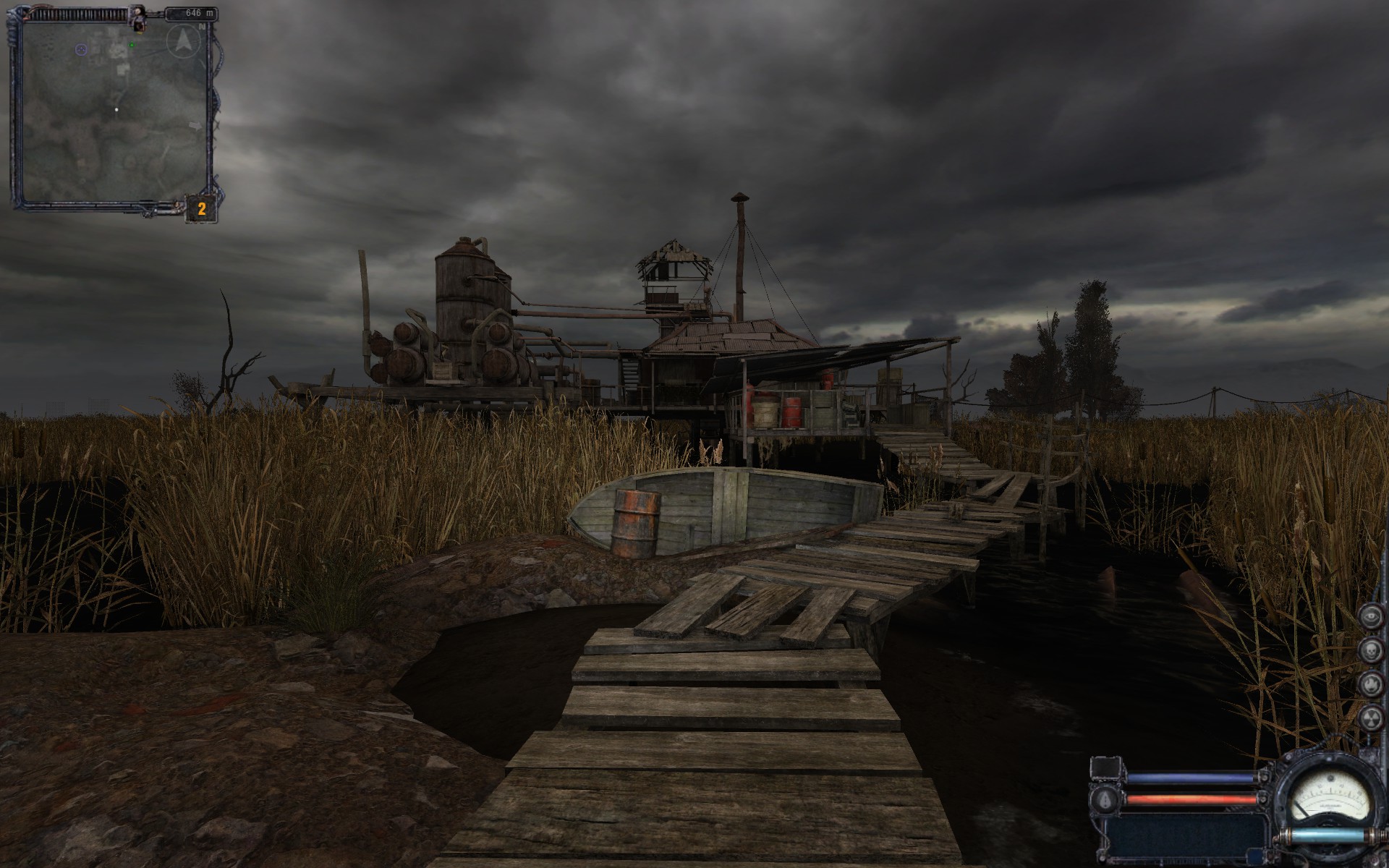
In other words, S.T.A.L.K.E.R.’s not about whether you can locate resources, it’s about whether you can overcome the obstacles preventing you from obtaining it. The pressure to find resources is there, but gentle enough to let you exercise your agency. The struggle for survival is centred on conflict and problem-solving rather than simply scavenging. You can devote your time into strategising how you will obtain resources, rather than simply hoping you find them, and this is the mechanical basis of S.T.A.L.K.E.R.’s success.
You control the game’s pacing.
There’s this great video from the 2013 7DFPS event where Dan Pinchbeck, creator of Dear Esther, talks about two different kinds of shooters: reactive ones, where things happen to you, and strategic shooters, where you plan your moves and execute them. One example of the former would be Serious Sam, a game where you face thousands of enemies who run at you while you backpedal, firing furiously. On the flip side, Far Cry 2 is a strategic shooter — the Far Cry series is all about planning what to do before you do it, after all.
I think survival games are the same way — most survival games position you as a slave to needs. S.T.A.L.K.E.R., in contrast, provides just enough impetus, through blowouts, certain timed missions, and physical needs, to move forward. How quickly or slowly is ultimately up to you. Hear that group of bandits in the next valley? They have probably got the guns and ammunition you need. Maybe you can find a vantage point to snipe them. Perhaps you run through a group of blind dogs and lead them directly to the bandits, causing chaos. Sneaking with a silenced weapon is always a good call, but sometimes you’ve got nothing but your trusty Kalashnikov and a few grenades to bring the hurt.
You choose when to engage, and you choose how to spend your resources, but you’re not in total control either — S.T.A.L.K.E.R. has its own risks and rewards. Do you really want what’s hiding in the radiation? Cool. If you’ve got enough vodka, go for it, though you might get drunk, and stumbling into the nearest mutant or anomaly is definitely not a pleasant experience.
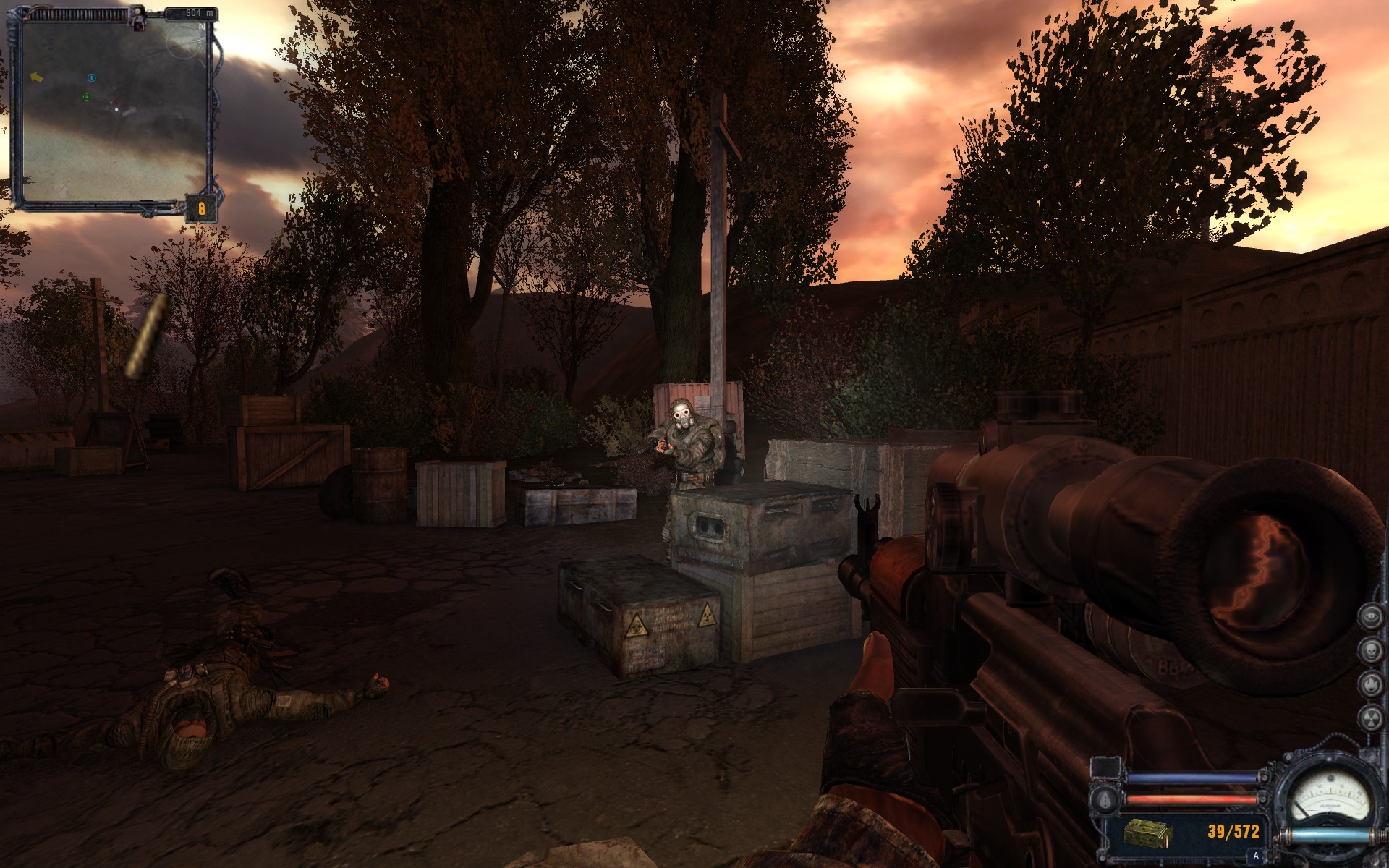
S.T.A.L.K.E.R.’s a lot like what Far Cry 2 tries to be, except that everything works really well together. No constantly-spawning checkpoints here, but there are plenty of allied and neutral NPCs out in the field. Far Cry 2 lacked predators — S.T.A.L.K.E.R. has them in spades. Heck, even the story makes a lot more sense, and this is coming from someone who considers Far Cry 2 to be one of the best games ever made.
The S.T.A.L.K.E.R. games deftly handle the “you can tackle objectives however you want and have the game’s complex systems create unique experiences” aspect of Far Cry 2 while simultaneously matching the criteria for a good survival game. The worlds are interesting to travel through, player tasks are varied, and the AI constantly generates unique situations.
It is, to my knowledge, the only survival game that provides you adequate time to plan and prepare, then backs that up with frustration-free, deep combat. If there are proactive and reactive survival games, then S.T.A.L.K.E.R. is proactive, while the problematic survival games I’ve played are reactive.
Mods take this even further. My preferred mod is a custom cocktail of graphics mods, dynamic weather, and AMK, which rebalances the game, adds in cut features, and emphasises the survival elements even more. I won’t play S.T.A.L.K.E.R. without AMK anymore; it’s just too good. Other mods include L.U.R.K. and Oblivion Lost, both enjoyable in their own right.
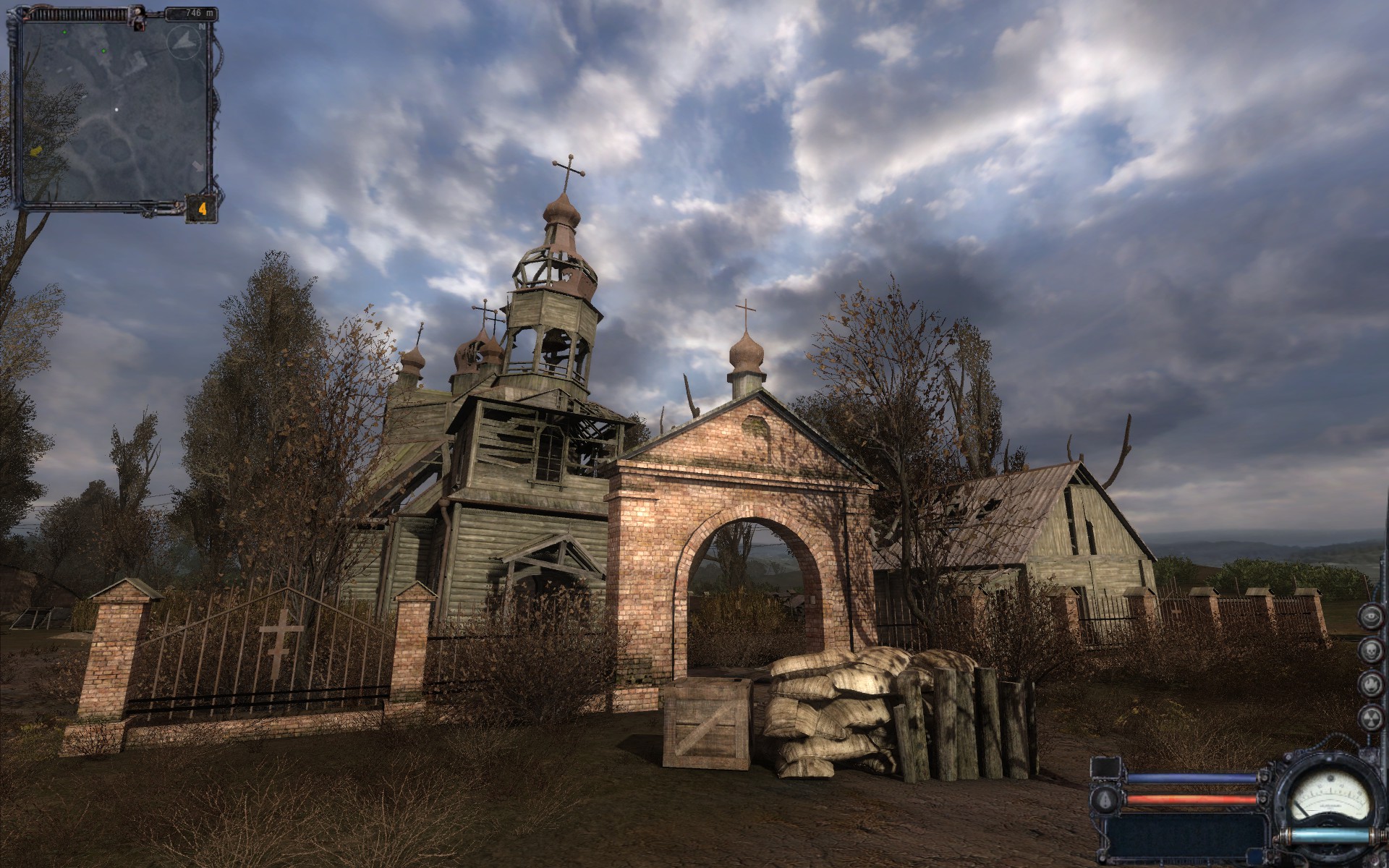
The ultimate goal of any game is to create some sort of emotion within the player, whether that’s the thrill of victory, sadness at a tragic narrative, enjoyment when faced with a humorous situation. Horror games are a genre dedicated to terror and thrills. But what about survival games? I believe they overlap with horror — players experience tension as they struggle to survive and thrills when they overcome a nasty obstacle, whether that’s finding a scrap of food at the last second or downing a monster with your last bullet.
Unfortunately, I think too many survival horror games feature mechanics that conjure up nothing but stress.
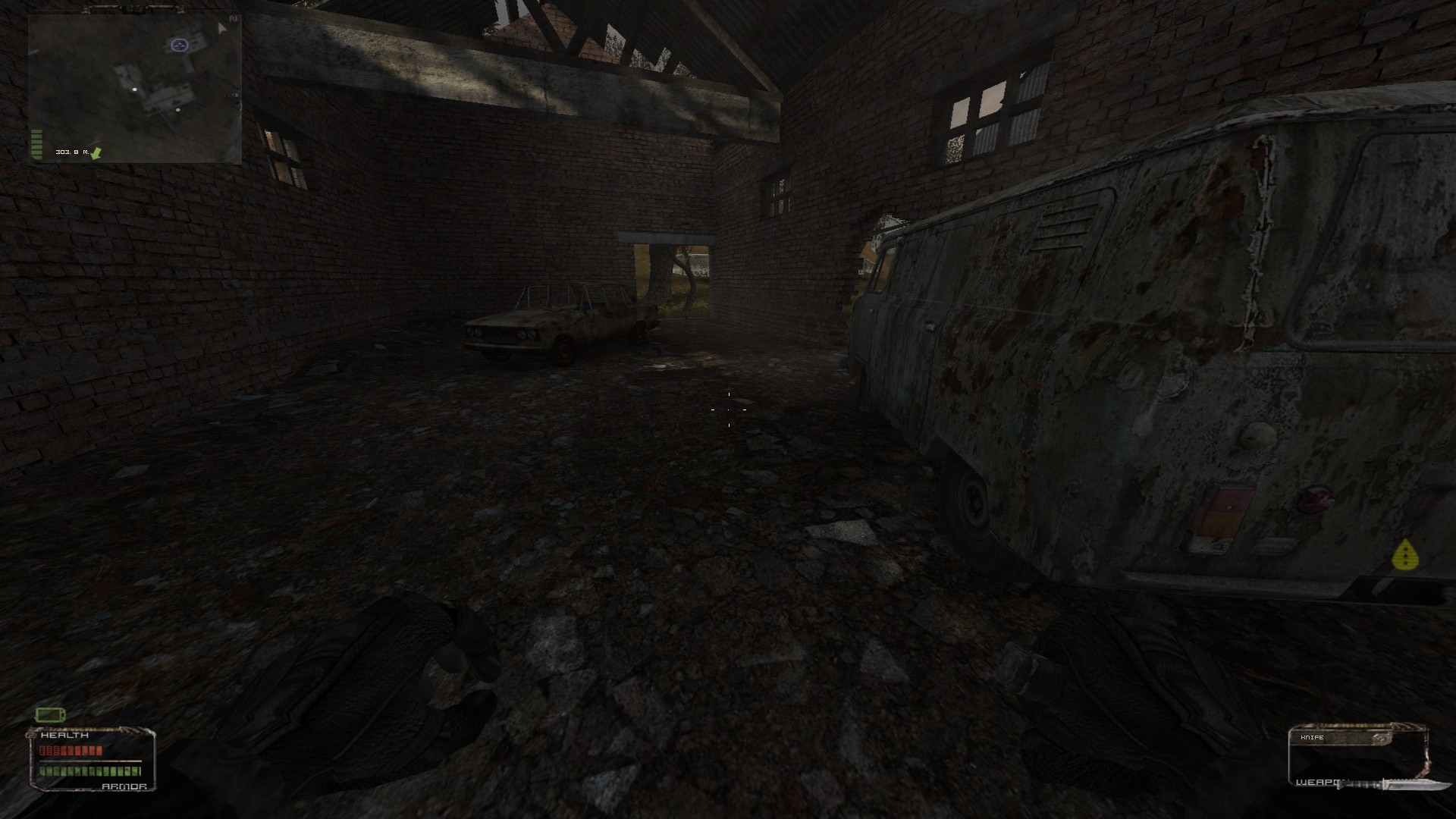
Too many developers, I believe, go through the mechanical and logical ramifications of their mechanics and leave it at that. They think about needs, like “players should scavenge for food,” but these mechanics feel implemented with all the cold logic of a Vulcan from Star Trek: “survival is a stressful experience, so the game should be stressful.”
Mechanics aren’t the be-all, end-all of games, though. They’re tools for creating experiences. S.T.A.L.K.E.R.’s monsters look scary because the game wants us to be scared. They’re tough and we’re weak because we’re supposed to feel vulnerable. The combat is fair because the thrill of victory against those odds is undeniable. It’s all about having a strong emotional core, and I feel S.T.A.L.K.E.R.’s is by far the strongest in all of video gaming.
Imagine treading water in a really cold lake. It’s not exactly the most fun experience — the water’s far below body temperature. Your body craves warmth and practically screams at you to get out. It’s a physically stressful experience. Reactive survival games are a lot like that — sure, swimming might be fun, but rapidly being drained of warmth is painful.
Now consider the high dive. If you’ve never done it before, it can be an intimidating experience. You can take your time. As with cold water, you might fear diving in, but unlike the cold water situation, the plunge into the depths of a nice, warm pool is always extremely satisfying. This is S.T.A.L.K.E.R. — it still provides tension, but it also provides release as you plunge in.
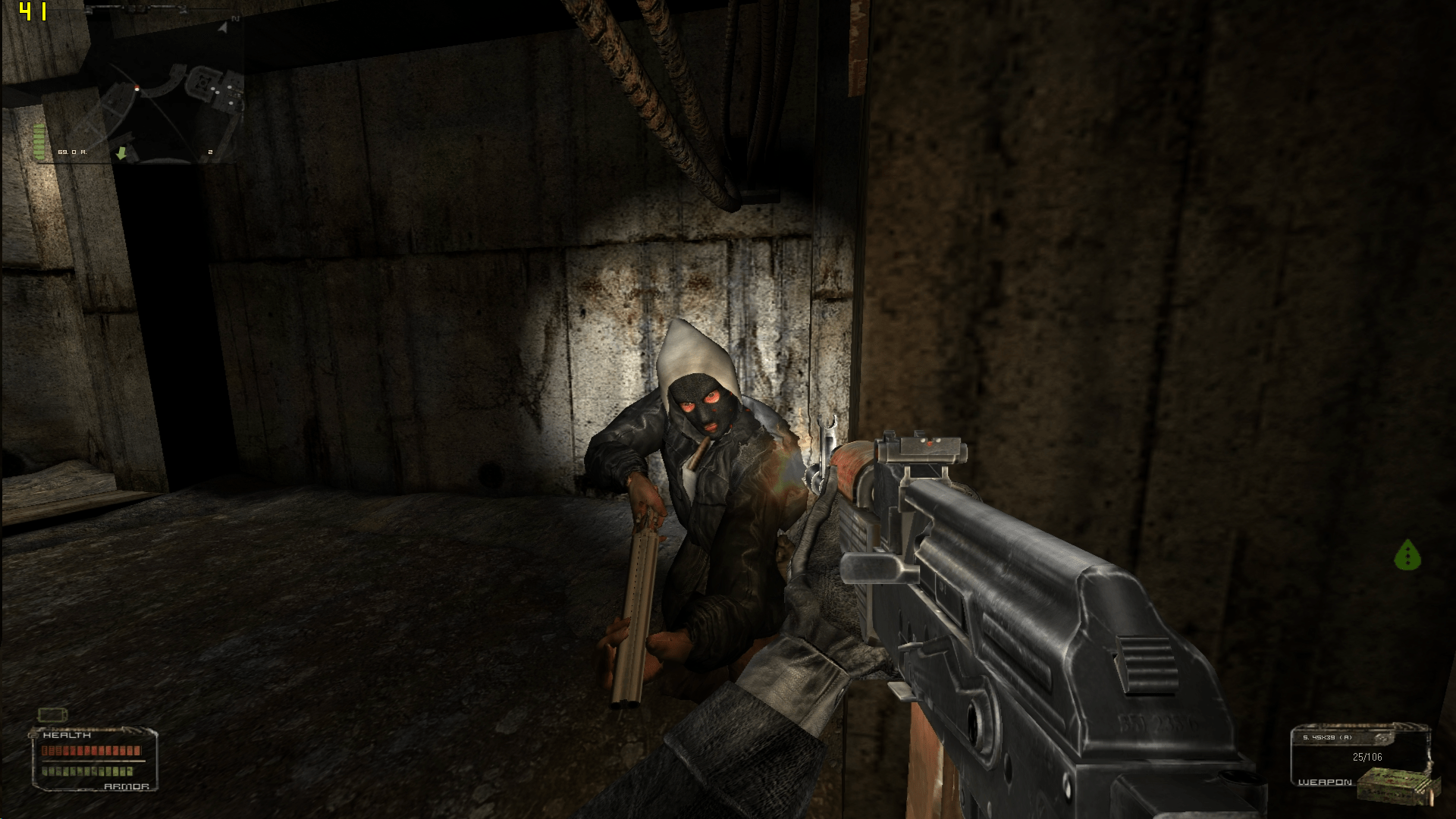
At the end of the day, what I want out of my games is to feel something I’ve never felt, to experience something I’ve never seen. In my own life, I’ve survived gruelling winters outdoors, cooking on a little propane camping stove. The weather was so cold, my food froze mere minutes after I removed it from the grill. I’ve canoed 50 miles in six days. One day, the weather was so bad, we canoed through rain, bailing out our canoes as we went. We fell asleep, exhausted, at 1 PM, waking up about 18 hours later, still worn out.
The whole point of putting myself in those situations was always that thrill of success, being able to say “I was there. I overcame that.” I’ve survived many games, but only in S.T.A.L.K.E.R. did I have the thrilling survival experience I wanted to have. Sadly, GSC Game World closed during the development of S.T.A.L.K.E.R. 2. Many employees went to 4A to work on the Metro games, which are great shooters, but not really survival games. Others went to Vostok to build Survarium, a free-to-play multiplayer shooter, also not a survival game.
Will another game pick up S.T.A.L.K.E.R.’s torch? I don’t know. I’ve heard that The Long Dark is a Canadian response to S.T.A.L.K.E.R. I’ve spent a little time with Sir, You Are Being Hunted, which the developers have described as “British Indie S.T.A.L.K.E.R.,” but I haven’t had enough time to form an opinion yet. GSC itself has recently reopened, but no new games have been announced. Hopefully, we’ll see another proactive survival game some day. I can’t wait.
GB Burford is a freelance journalist and indie game developer who just can’t get enough of exploring why games work. You can reach him on Twitter at @ForgetAmnesia or on his blog. You can support him and even suggest games to write about over at his Patreon
Pictures: S.T.A.L.K.E.R. Shadow of Chernobyl and Clear Sky. This story first appeared in February 2015.
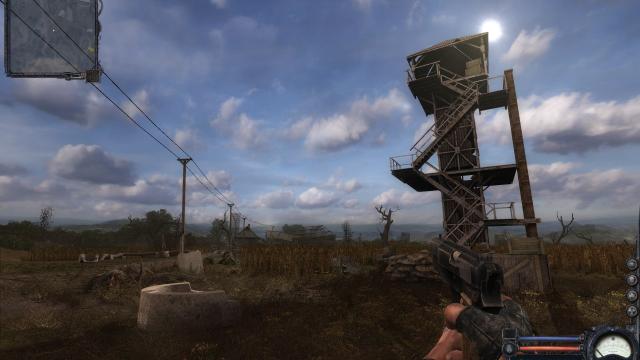
Comments
15 responses to “Most Survival Games Have Problems That S.T.A.L.K.E.R. Solved Long Ago”
Bulletstorm is awesome!
Bulletstorm IS awesome!
It’s true. Most ‘survival’ games these days are more like a ‘human blob’ simulator. Consume your bodyweight in food every hour or dissolve into goop.
Fucking ridiculous. If pressed, you can survive several days on a fucking candy bar.
Edit:
I wouldn’t hold your breath for Sir, You Are Being Hunted, either. It suffers from the same consume-your-bodyweight-or-die issue, but also makes itself a stealth game without any engaging stealth-related tools. It’s possible to engage, but doing so is almost a guarantee of death, and punishingly unrewarding.
While that’s true, generally game time moves much faster that real life, so the developers try to compensate for the fast moving day night cycle. Also, these people do more than sit around. They punch, shoot and walk around huge areas, which means they might have to eat more, but I’m not an expert though.
Great write up. I agree.
STALKER is an amazing game series. It’s what I hoped DayZ would become… the depth just isn’t there (yet).
It’s actually kind of sad when I think about how much better pretty much all of the STALKER games handle compared to any experience I have ever had with DayZ, from the mod to the stand-alone version… Especially when vanilla STALKER handling honestly leaves a fair bit to be desired.
I’ve been playing H1Z1 – that can be called two things – BerryHunter or MurderSim.
I was just ranting the other day I wished survival games were more like STALKER instead of “eat everything” simulators.
I agree a lot of developers don’t get survival games quite right with eat or die mechanics and overly convoluted systems that feel unpolished.
Anyway here’s my opinion:
Normally it stems from them trialing out too many different mechanics without focusing on just some, but it’s also a little from players asking for all these different things which overwhelms the development of a title.
I also believe some of the issues around this only occurring to survivalist games is that there hasn’t really been any AAA titles for a pure survivalist game that sets a standard for others to go from.
As it stands people will always say “that’s a Day Z clone” for (zombie) survival games – yet Day Z had some of the worst mechanics I’ve seen in recent gaming history, the invent system is still clunky and its just eat or die, maybe get killed by another player… oh wait there’s zombies you’re supposed to do something about but they will always respawn so there’s no actual point in wasting my ammo on.
Minecraft has survival down well, the problem is just after you have survived and obtained armour and food supply chain you’re strong enough to the point of being immortal and surviving goes out the window pretty quick as it transitions from a survival game to a building and design game.
If you want an everlasting survival game you need to make sure the location you’re surviving in has some kind of countdown timer – survive this area for this amount of time then move on to the next sort of thing, unfortunately no one has quite captured this prospect with a decent game engine behind them.
🙂
Quiet, you.
I can’t remember the stalker mod, but it had the blow out (iirc) system where randomly the sky would go dark and radiation would explode and kill you if you were out in the open. It forced you and all the AI to run for cover, leading to some intense battles for Shelter.
That mechanic in my opinion would change everything in a survival game.
Mercy or reborn, I can’t remember which one. They did remake them for each release though which is cool.
STALKER vanilla was by far the best survival game out there. STALKER with some mods (I always played with STALKER complete) makes it by far the best FPS of any kind out there. It handled survial well, it handled bullet mechanics of shooting well, it handled night time (actually pitch black, making an enemy with a torch a beacon for snipers) excellently.
I actually think it handled horror better than most as well.
Most horror games rely on making you extremely weak (have no weapons etc). In stalker, you can be armed to the teeth, but those mutants lurking in dark hallways and around corners can still shred you. And the AI was brilliant. I still remember the first time I saw a snork (simple enemy actually) in Lab X18. I swear that asshole was just stalking me without attacking, all it did was run out one door and in another before I got a shot off, and it never attacked to this day…
Then I saw that pyrogeist…
STALKER CoP
With the Misery mod
have fun
Goddamn. Stalker. STALKER
I will play these games forever. I have put over 300 hours into both SOC and COP. Probably more like 500 into COP, but only about 100 into CS.
I need a new game like Stalker. I was in the Survarium beta from basically first playable release, but it’s just not the same.
Laptop hard drive died a couple of years ago. I could reinstall a fresh copy (SoC) and start again, but all those many hours looting and stashing…advancing to the final set-piece(s) at the reactor…
This game enthralled, scared and awed me. It puzzled me with the Ukranian/Russian languages spoken, to the point of finding phrase translations online.
My laptop was only a Core2 Duo with onboard GPU, but it still played fluidly and looked good at 720P via HDMI to a 51″ PDP. My current rig can easily run it at 1080P with details turned up.
And so I will, all these years later, recover as much as possible from the old HD and try to reconstruct the saved games. Such is the emotional hold the STALKER series has on me.
They are surely classics.